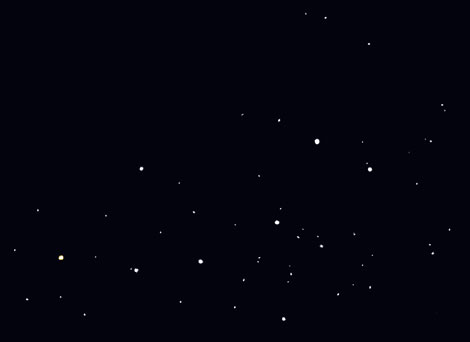
Move mouse over sketch to see labels.
Observation Notes:
I wasn’t planning on a naked eye constellation sketch this evening. But the sky was so fantastically clear, and my new astronomy glasses were doing such a great job, that I decided to see how deep I could go with Ursa Minor. When I began the sketch, I was picking up a lot of granularity throughout the constellation. By the time I had finished sketching the stars you see in the sketch, a fine gauze of cirrus had moved in, cutting off that granular appearance. The faintest I got was magnitude 6.8 with HIP 81757 (See rollover labels in the sketch).
One feature of Ursa Minor I find interesting is the close star pairing at the first joint in the handle. I find it analogous to the Mizar/Alcor pairing in Ursa Major, but much more difficult to resolve. Mizar and Alcor are 2nd and 4th magnitude stars that are separated by 11 arc minutes, and something I can separate with or without the glasses. The 2 Ursa Minor stars Delta- and 24-Ursa Minoris are 4.3 and 5.8 magnitude stars that are separated by 23 arc minutes. Although the separation is larger, they are both about 2 magnitudes fainter. Without the stargazing glasses, I only get the foggiest hint that there is more to Delta than just a single star. With the glasses, the two stars are distinct. If you get to a 6th magnitude observing site, give those stars a try and see what you can make out.
| Subject | Ursa Minor |
| Classification | Constellation |
| Date/Time | April 20, 2006 – 10:00 PM MST (April 21, 2006 – 05:00 UT) |
| Observing Loc. | Anderson Mesa, AZ |
| Instrument | Naked eye |
| Eyepieces/Mag. | N/A |
| Conditions | Clear at first, then high cirrus, calm |
| Seeing | ~5/10 |
| Transparency | Mag 6.8 (Based on HIP 81757) |
wooooooooooah!